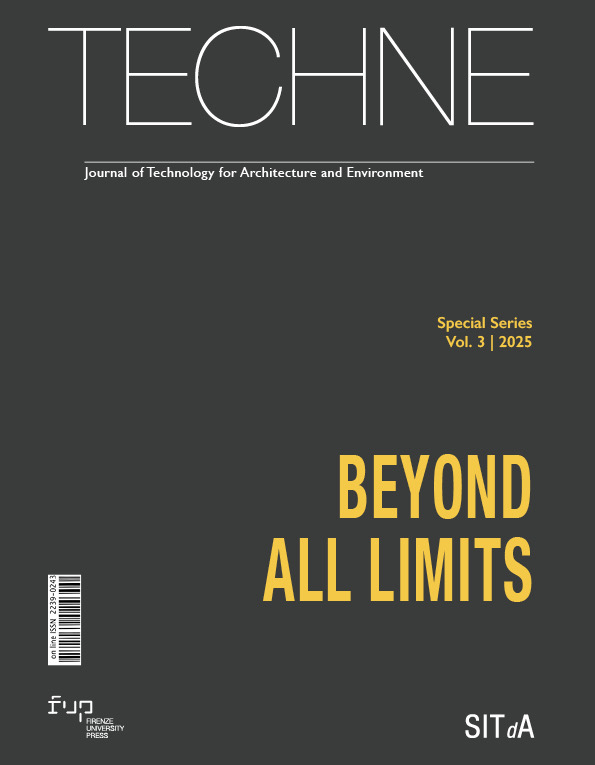Published 2025-07-31
Keywords
- Informal city,
- Spontaneous city,
- Illegal city,
- Sustainable regeneration,
- Spatial Planning tools
How to Cite
Copyright (c) 2025 Claudia de Biase, Salvatore Losco

This work is licensed under a Creative Commons Attribution 4.0 International License.
Abstract
The informal city is configured and articulated as a spontaneous, sprawling or illegal city. Each of them present recurring and distinctive characteristics also in relation to specific territorial contexts. After outlining the scientific background of informal and illegal cities, and summarising the Italian specificities of the last ones, the paper focuses on the dualism between the informal and the illegal city found in the analysis of the technical literature on the subject regarding spatial planning. The aim is to bring out affinities and differences between the two city models to contribute to the formulation of the correct contents of urban planning tools for their redevelopment and/or regeneration to transform especially Italian illegal cities into liveable neighbourhoods.
Downloads
References
- Abrams, C. (1964), Man’s struggle for shelter in an Urbanizing World, University of Michigan, M.I.T. Press, Cambridge, Massachusetts, US.
- Abrams, C. (1966), Squatter Settlements: the problem and the opportunity, Office of International Affairs, Dept. of Housing and Urban Development, Washington, US.
- Barcelona field study center (1999), Urban Glossary, available at: https://geographyfieldwork.com/urban_geography_glossary.htm (accessed 3 April 2025).
- Benjiaminsen, A. et al., “Formalisation of land rights: Some empirical evidence from Mali, Niger and South Africa”, Land Use Policy, 26, n. 1 (2009), pp. 28-35, available at: https://doi.org/10.1016/j.landusepol.2008.07.003. DOI: https://doi.org/10.1016/j.landusepol.2008.07.003
- Berdini, P. (2010), Breve storia dell’abuso edilizio in Italia. Dal ventennio fascista al prossimo futuro, Donzelli Editore, Rome, Italy, p. 24.
- Bertini, A. (1994), “The spontaneous city,” in Petroncelli, E. (Ed.), Mediterranean area habitat urbanism and technological innovation, Tunisia, Di.Pi.S.T. Collana di studi di urbanistica, vol. no. 17, University of Naples Federico II, Naples, Italy.
- Cellamare, C. (2010), “Politiche e processi dell’abitare nella città abusiva/ informale romana”, Archivio di studi urbani e regionali, n. 97-98, p. 145. DOI: https://doi.org/10.3280/ASUR2010-097010
- Cellamare, C. (2019), Città fai da te, Donzelli, Rome, Italy, p. 124.
- de Biase, C. and Losco, S. (2023), Abusivismo urbanistico e pianificazione comunale. Verso la rigenerazione, Edizioni Le Penseur, Brienza (Pz), Italy, pp. 6 e sgg.
- Ekandem, E.S. et al., “Spontaneous Settlements: Roles and Challenges to Urban Planning”, Journal of Sustainable Development Studies, 6, n. 2 (2014), pp. 361-390, available at: https://infinitypress.info/index.php/jsds/article/download/760/377.
- Fera, G. and Ginantempo, N. (1985), L’autocostruzione spontanea nel Mezzogiorno, FrancoAngeli, Milano, Italy.
- Hernandez, F. et al. (2010), Rethinking the Informal City – Critical Perspectives from Latin America, Berghahn Books, New York, US, pp. 163-180.
- Isolera, I. and Berdini P. (2024), Roma moderna. Due secoli di storia urbanistica, Nuova edizione, Piccola biblioteca Einaudi, Turin, Italy.
- Koolhaas, R. (2006), Lagos wide & close interactive journey into an exploding city, Submarine Channel DVD, Documentary directed by B. van der Haak.
- Lewis, A., “Economic development with unlimited supplies of labour”, The Manchester School, 22, n. 2 (1954), pp. 139-191, available at: https://doi.org/10.1111/j.1467-9957.1954.tb00021.x DOI: https://doi.org/10.1111/j.1467-9957.1954.tb00021.x
- Marcelloni, M. (2003), Pensare la città contemporanea. Il nuovo piano regolatore di Roma, LaTerza, Roma-Bari, Italy.
- Roy, A. (2011), “Slumdog Cities: Rethinking Subaltern Urbanism”, International Journal of Urban and Regional Research, 35, n. 2, pp. 223-238, available at: https://doi.org/10.1111/j.1468-2427.2011.01051.x DOI: https://doi.org/10.1111/j.1468-2427.2011.01051.x
- Srinivas, H. (2005), “Defining Squatter Settlements”, Global Development Research Center Web site, available at: https://www.gdrc.org/ (accessed 3 April 2025).
- Turner, J.F.C. (1968), “Uncontrolled urban settlement: problem and policies”, International social development, pp. 107-127, available at: https://www.communityplanning.net/JohnTurnerArchive/pdfs/UncontrolledUrbanSettlement.pdf
- Un-Habitat (2009), Global Report on Human Settlements 2009. Planning Sustainable Cities, Earthscann UK-USA, p. 133.
- Yiftachel, O. (2009), “Theoretical Notes on ‘Gray Cities’: the Coming of Urban Apartheid?”, Planning Theory, 8, n. 1, pp. 88-100, available at: https://doi.org/10.1177/1473095208099300 DOI: https://doi.org/10.1177/1473095208099300
- Zanfi, F. (2008), Città latenti, un progetto per l’Italia abusiva, Mondadori, Milan, Italy.






